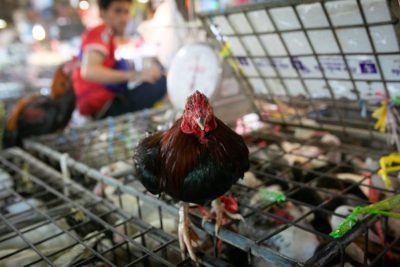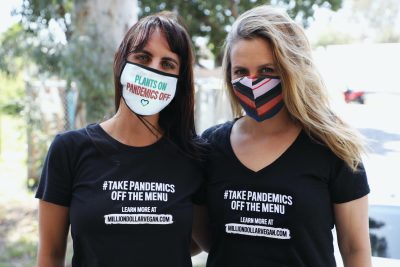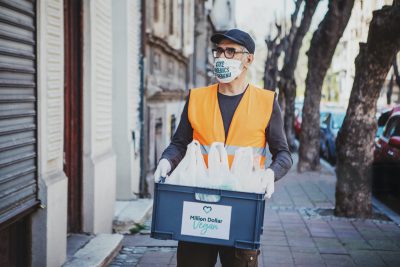Today, up to 90 percent of people in the U.S. do not understand where the novel coronavirus came from.
Mainstream media outlets are neglecting to report on the connection between COVID-19 and the human exploitation of nonhuman animals. Yet the suffering we are experiencing now is nothing new. We have seen zoonotic pandemics emerge from the animal trade before and will experience them again if we do not take steps to change our broken food system.
Since March, Sentient Media has been working hard to ensure that the truth about COVID-19’s animal origins is reported in its entirety, not just what’s ‘convenient’ for people to hear. While headlines about toilet paper shortages and business closures have grabbed our attention, a new strain of bird flu (H5N8) has just cropped up in Germany and an African swine fever outbreak has been reported in western Poland. With strong, consistent messaging now, we can and must irrevocably explain the causal relation between factory farming and pandemics.
But many of the world’s largest news publishers are failing to do so. We found that even when articles explicitly mention COVID-19’s connection to animals, they neglect to mention that human exploitation of nonhuman animals is at the root of the pandemic. In March and April, Sentient Media surveyed five of the largest journalism organizations in the world—NPR, BBC, The Guardian, The Washington Post, and The New York Times—to find out how they’re reporting on coronavirus.
We specifically looked for mentions of the words “animal” and “origin” in trend stories and overview pieces about the pandemic, as both reflect the kind of comprehensive coverage that should mention COVID-19’s animal link.
What we found is that while at the time about 70 percent of the articles we surveyed explained where the virus originated, often using sparse language like “it came from animals,” very few made the connection to the cause of the outbreak. Only 15 out of the 50 most popular articles we surveyed accurately explained humans’ culpability in the spread of the virus.
Let’s be clear: The COVID-19 outbreak was caused by humans. Without the wildlife trafficking industry, we would not have coronavirus. Unless we start reporting on the true cause of this pandemic and its implications for animal agriculture, we’ll never be able to take the steps necessary to prevent the next outbreak.
To further understand the potential that social media has to influence millions of users each day, Sentient Media monitored 10 major news outlets’ coverage of COVID-19 on Instagram. Though nearly every post for March and April was coronavirus-related, there was a severe lack of visual imagery highlighting the connection between our current food system and pandemics.
We also tallied the social media followings of three top news organizations—The New York Times, The Washington Post, and HuffPost—to understand the impact they have on the publics’ understanding of COVID-19 and why confining animal, as we see in wildlife markets and factory farms around the world, creates breeding grounds for disease.
Combined, these three news giants have the potential to reach over 116 million people across Facebook, Instagram, and Twitter each day. After reviewing their social channels, we found that the presence of wildlife market imagery and photos of factory farms, which could be harboring the next pandemic much closer to home, were nearly non-existent.
The need for honest, fact-driven news coverage has never been greater. What is being made rapidly apparent during the pandemic is that the need for news monitoring is just as great. Over the past two months, The New York Times, NPR, and The Guardian all failed to cover COVID-19’s animal angle responsibly. It’s up to us to hold them accountable for the spread of inaccurate or incomplete information about the overwhelming threat the factory farming industry poses to public health and the stability of the global food supply chain before the next virus hits.
About the Author: Matthew Zampa is the lead reporter with Sentient Media. Follow him on Twitter at @matthewzampa.



